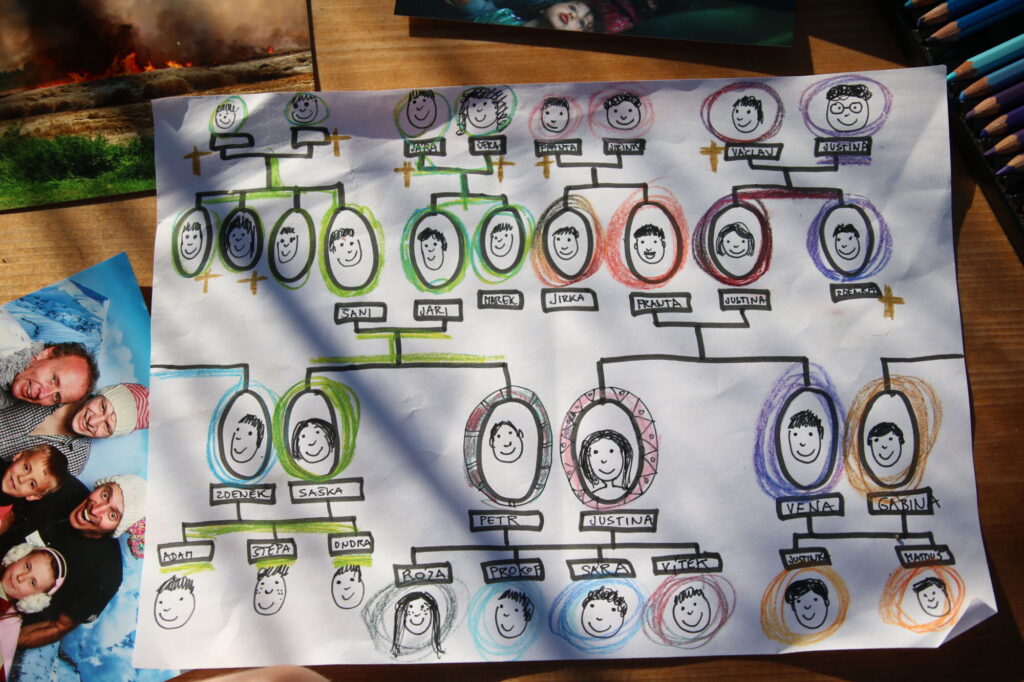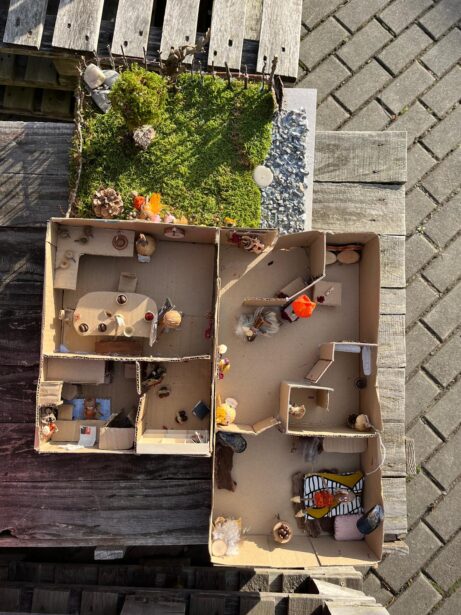A Year Outside: The Season of Souls
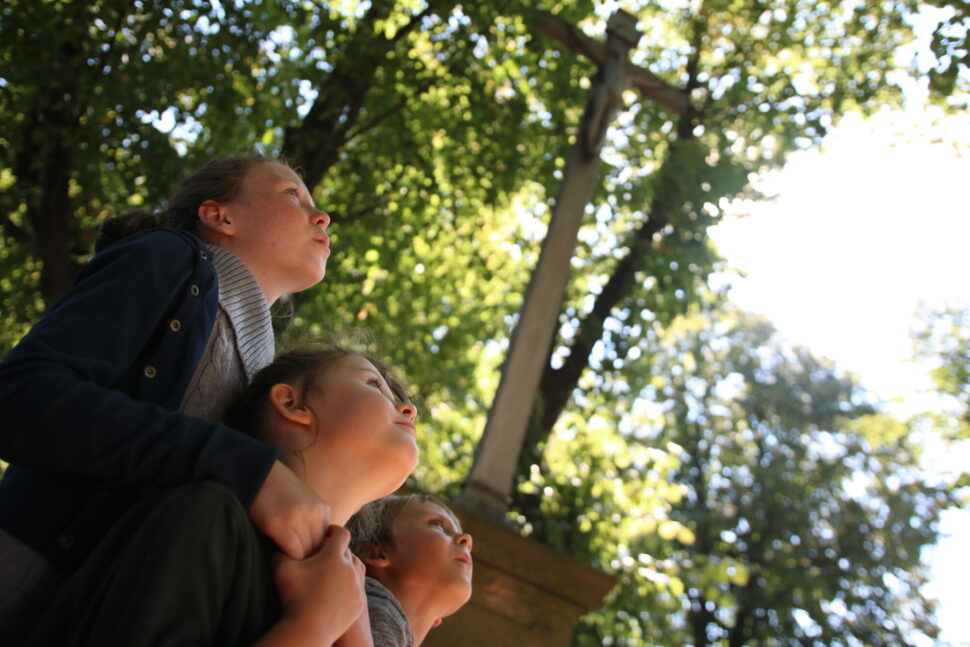
Exploring Outdoor Learning, Autumn Traditions & Family Connection
As autumn deepens, the air turns crisp, the leaves drift down, and nature quietly prepares for rest. Across the world, this season carries a shared sense of remembrance – a time when many cultures honor those who came before us.
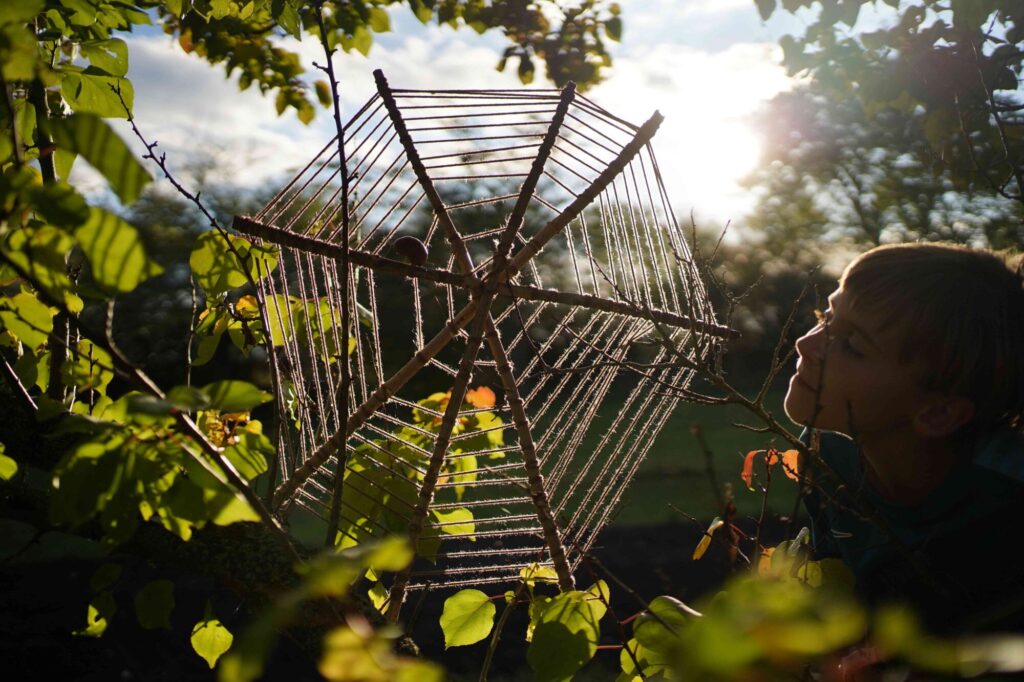
All Souls’ Day, Halloween, and Samhain may look different, but they all grow from the same ancient roots. Each reminds us of the balance between life and death, light and darkness, rest and renewal.
This article explores how these traditions connect to nature and outdoor learning – and offers 20 creative autumn activities for children that celebrate remembrance, creativity, and the beauty of the season.

Why Remembering Belongs Outdoors
When children ask, “Why do we visit cemeteries?” or “Why do people wear masks?” we can offer more than a simple answer. We can show them how these rituals reflect the natural cycles of life – the fading light, falling leaves, and the quiet preparation for new growth.
Being outdoors makes these lessons tangible. The mist, the sound of rustling leaves, the glow of a candle – all awaken curiosity and mindfulness. For adults, too, the flicker of a lantern in the dark is a reminder that light shines brightest in shadow.
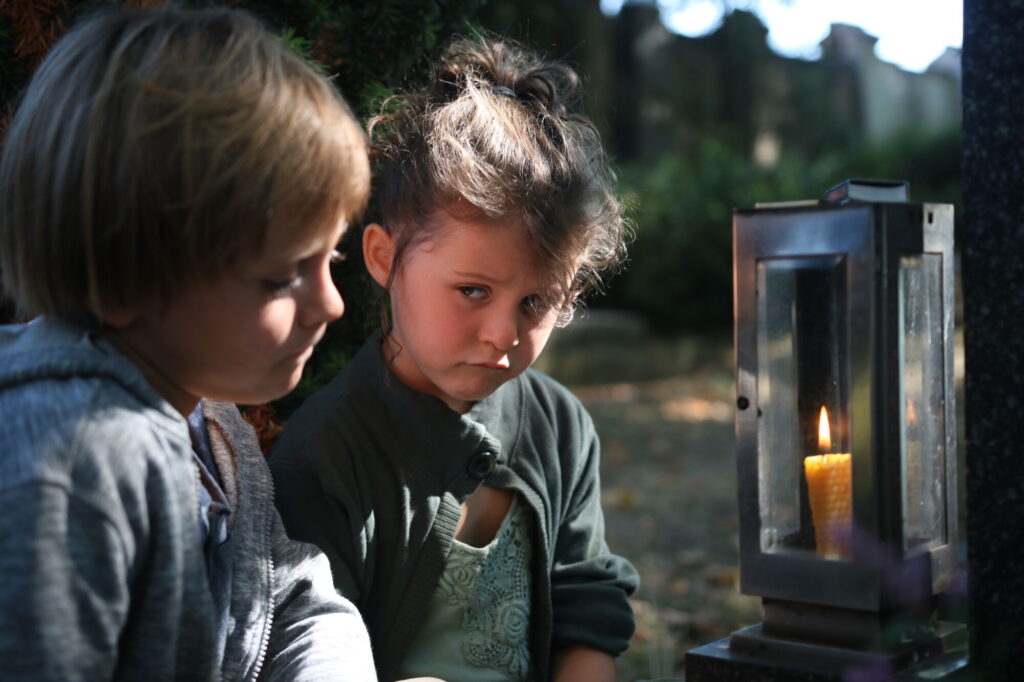
November: Slowing Down and Savoring the Season
November invites us to pause. The bright colors of autumn soften, the scent of soil deepens, and the world grows quiet. Nature slows its pulse – and so can we.
This is a beautiful time to slow down, reconnect, and enjoy family moments in nature – even brief ones can bring peace and inspiration. Below are some activities that bring families closer to the spirit of the season.
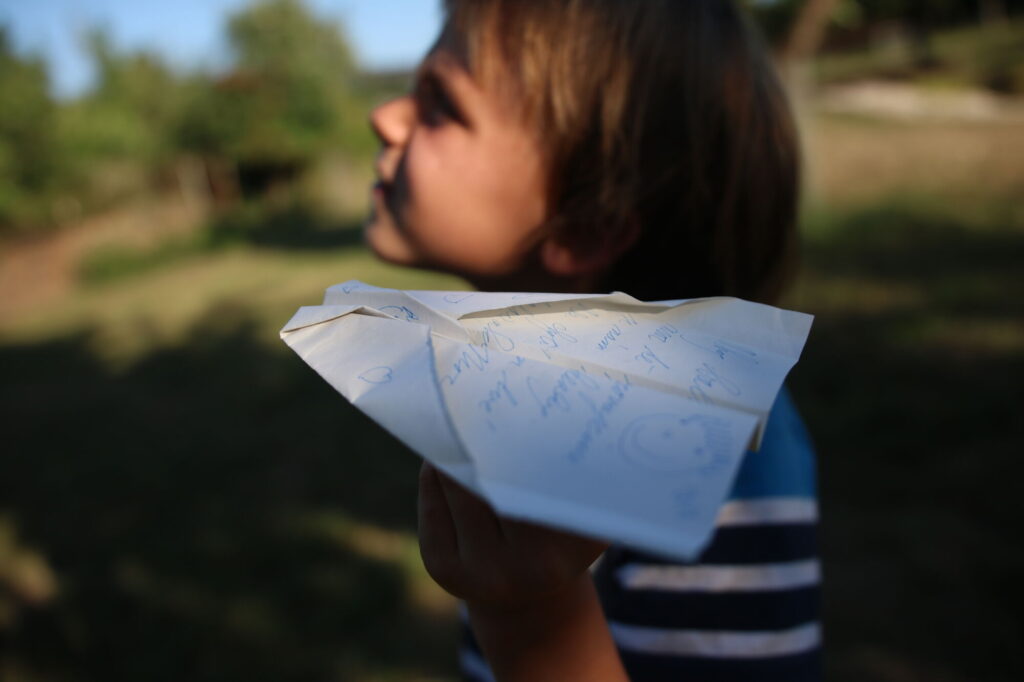
20 Outdoor Activities for the Season of Souls
These nature-based activities invite children to explore, reflect, and celebrate life’s rhythms – perfect for classrooms, families, or forest school settings.
- Observe nature preparing for rest – Look for signs of hibernation: where do insects hide, where have frogs gone, what clues do animals leave behind?
- Map autumn’s changes – Choose a spot to visit each week and record its transformation through photos or sketches.
- Build a hedgehog house – Use branches and leaves or make a small wooden shelter for wildlife.
- Visit a cemetery – Take a quiet walk, light a candle, and talk about the cycle of life.
- Create a remembrance wreath – Gather colorful leaves, acorns, and twigs to make a wreath that celebrates memory and nature’s beauty.
- Send a message to the ancestors – Write or draw a note and offer it to the wind, water, or earth.
- Make a family tree – Explore your roots together and share stories about where your family came from.
- Host an afternoon with grandparents – Bake, sip tea, and listen to stories from their childhood.
- Lantern walk at dusk – Bring lanterns or flashlights and see how familiar places change after dark.
- Enjoy a candlelit “dark hour” – Turn off the lights, read stories, or simply talk together.
- Share family stories – Keep memories alive by telling tales from your own childhood.
- Track daylight – Note sunrise and sunset times and create a chart of shortening days.
- Watch the night sky – Learn to spot winter constellations on clear November nights.
- Make “wind snakes” – Hang ribbons or fabric strips and observe where the wind blows strongest.
- Explore the world of mosses – Discover their textures and patterns with a magnifying glass.
- Create “autumn in a jar” – Collect treasures like leaves, seeds, and pinecones as a reminder of outdoor days.
- Play tree tag – Touch a tree to stay safe — simple, active, and full of laughter.
- Make leaf stained glass – Press colourful leaves between sheets of wax or transparent paper and hang them in the window.
- Feed the birds – Build a simple feeder and welcome your feathered winter visitors.
- Build tiny animal dens – Create shelters for real or imaginary woodland creatures.
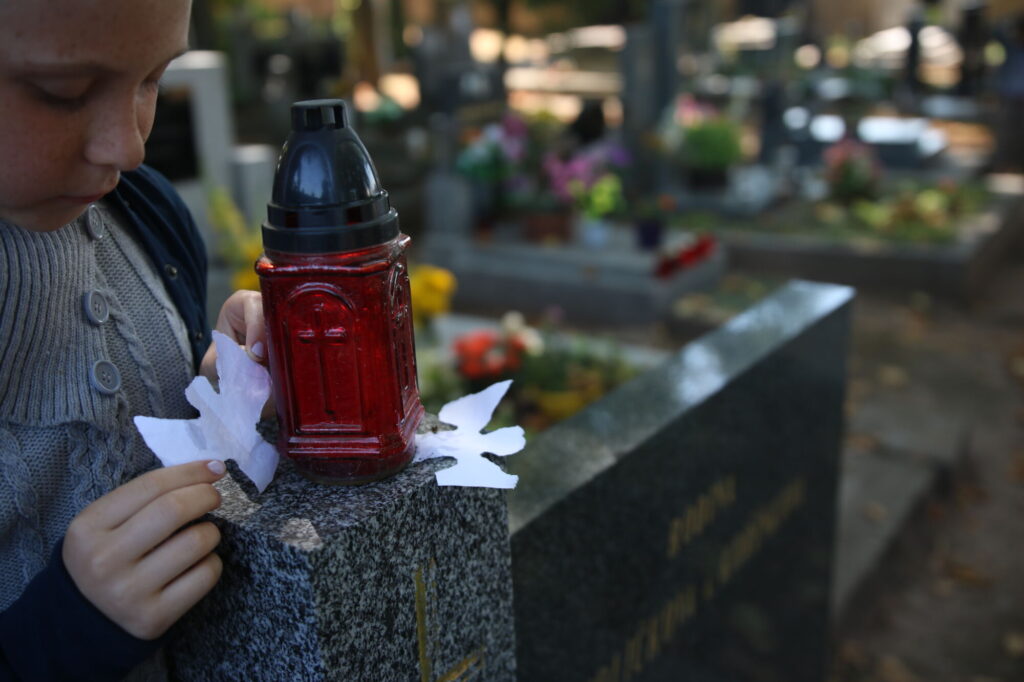
The Three Faces of the Autumn Festival of the Dead
Across centuries, people have marked the end of the harvest as a moment when the veil between worlds grows thin. Though names differ, the meaning endures – gratitude, remembrance, and renewal.
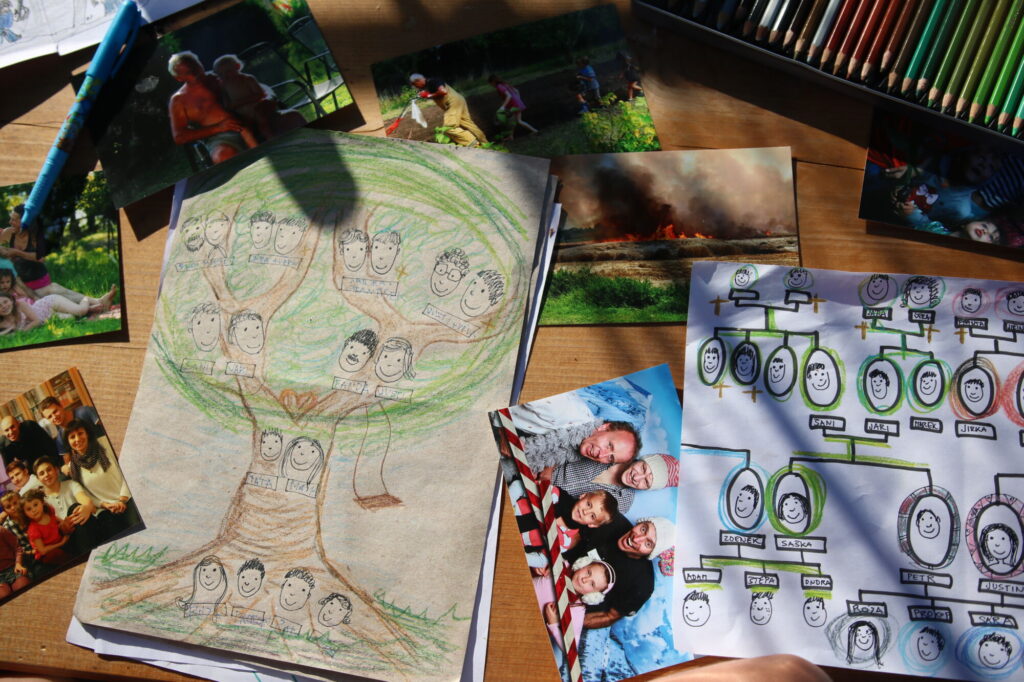
Samhain (Celtic Tradition)
Celebrated on October 31st, Samhain marked the end of the harvest and the Celtic new year when the border between life and death was believed to fade.
Connection to nature: Samhain falls midway between the autumn equinox and winter solstice, the time when nature visibly dies and the days shorten.
Traditions: Setting places at the table for departed relatives, lighting candles in carved turnips for wandering souls, wearing old clothes or painting faces to ward off evil spirits.
Many Samhain customs inspired today’s Halloween and All Souls’ Day traditions.
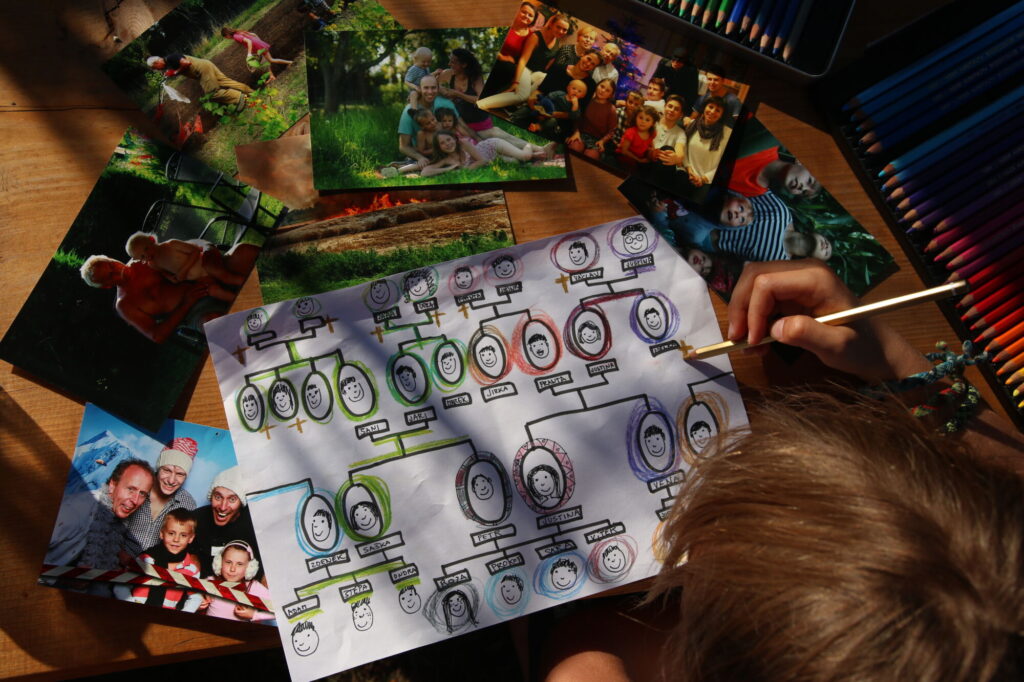
All Souls’ Day (Christian Tradition)
Observed on November 2nd (celebrated from the evening of November 1), this is a day of remembrance for departed loved ones.
Connection to nature: Celebrated as nature settles into winter sleep. The light of candles on graves symbolizes hope and renewal – like seeds lying in the earth waiting for spring.
Traditions: Visiting cemeteries, decorating graves, lighting candles, prayers for the dead, and special church services. In some European traditions, families once left food and light for visiting souls.
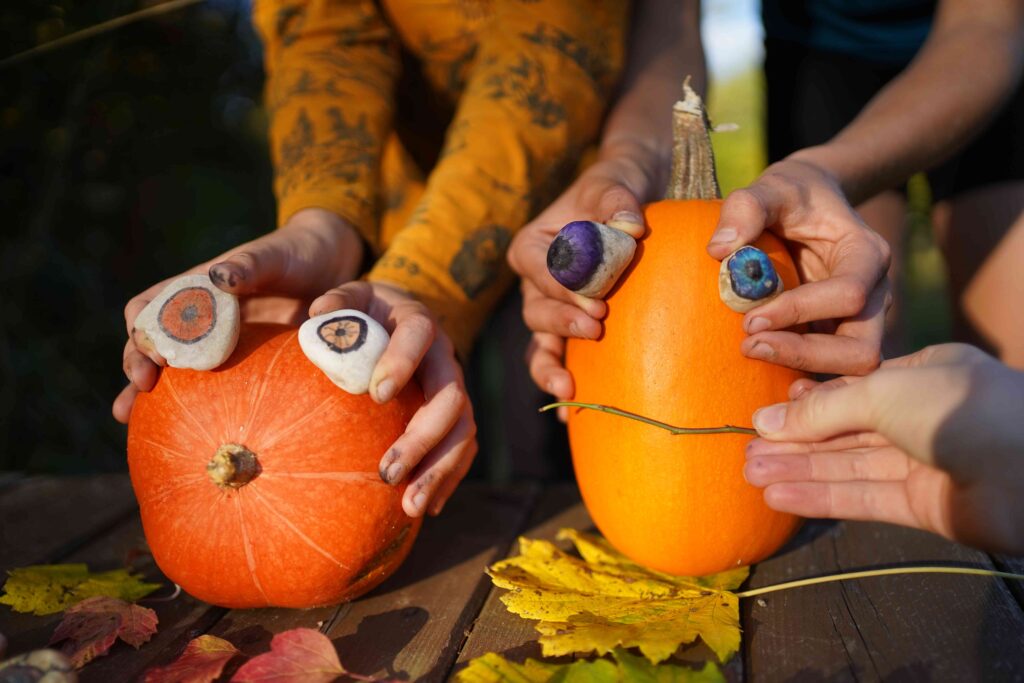
Halloween (Modern Celebration)
Born from Samhain and brought to America by Irish immigrants, Halloween evolved into a playful, creative celebration. Pumpkins replaced turnips, costumes became fun rather than fearful, and the night turned into a festival of imagination, community, laughter, and sweets.
Connection to nature: Pumpkins – the main Halloween symbol – ripen at this time. Carving “jack-o’-lanterns” once protected against spirits; today it’s a creative way to enjoy autumn.
Traditions: Pumpkin carving, costumes, trick-or-treating, spooky decorations, parties.
Despite its modern face, Halloween still carries the ancient whisper of connection – between generations, and between life and death.
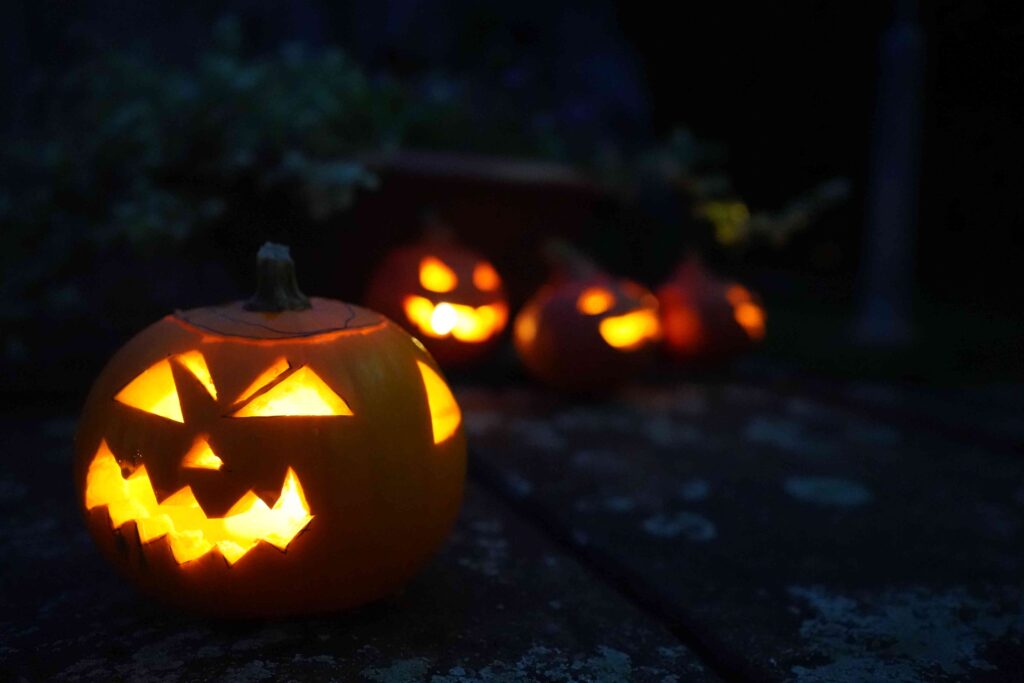
Related Traditions Around the World
- Día de los Muertos (Mexico): A colorful celebration of remembrance with marigolds, candles, and family feasts.
- Obon (Japan): Lanterns are floated on water to guide ancestors’ spirits home.
- Pchum Ben (Cambodia): Families offer food to ancestors, celebrating generosity and gratitude.
- Qingming (China): Families visit graves, fly kites, and picnic together – blending remembrance with renewal.
These customs show that connection to ancestors and nature transcends cultures. Each expresses love, gratitude, and the desire to keep memory alive.
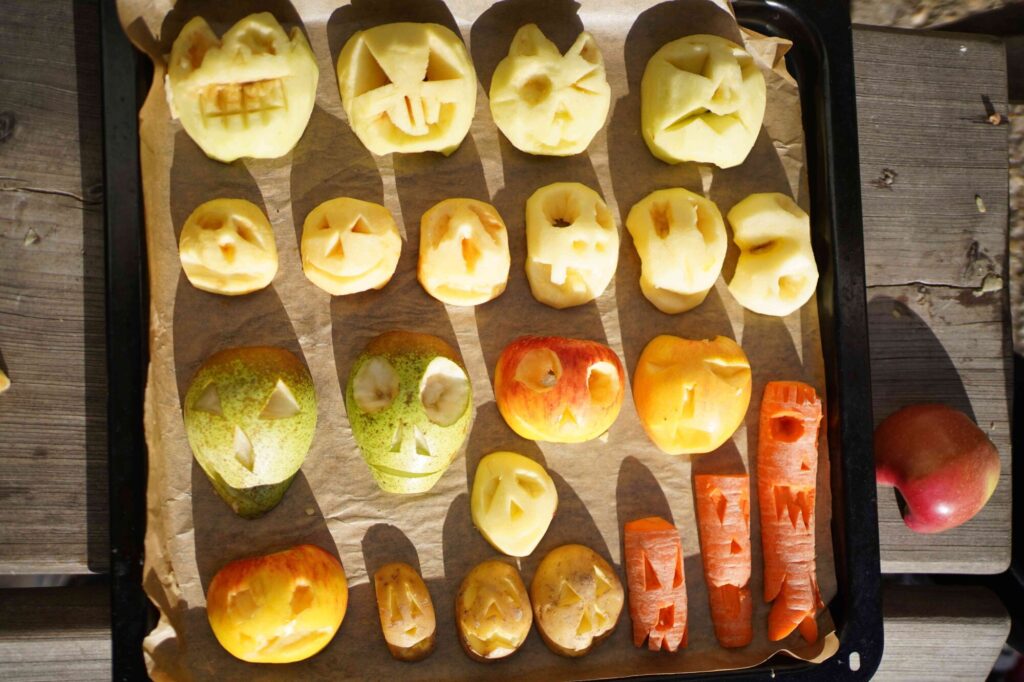

A Bridge Between Generations
Whether we celebrate All Souls’ Day, Halloween, or any other remembrance festival, they all remind us that we belong to something larger – the endless rhythm of nature.
As nature turns inward, so can we. Let’s slow down, reflect, and reconnect – with our families, our past, and the natural world that sustains us.
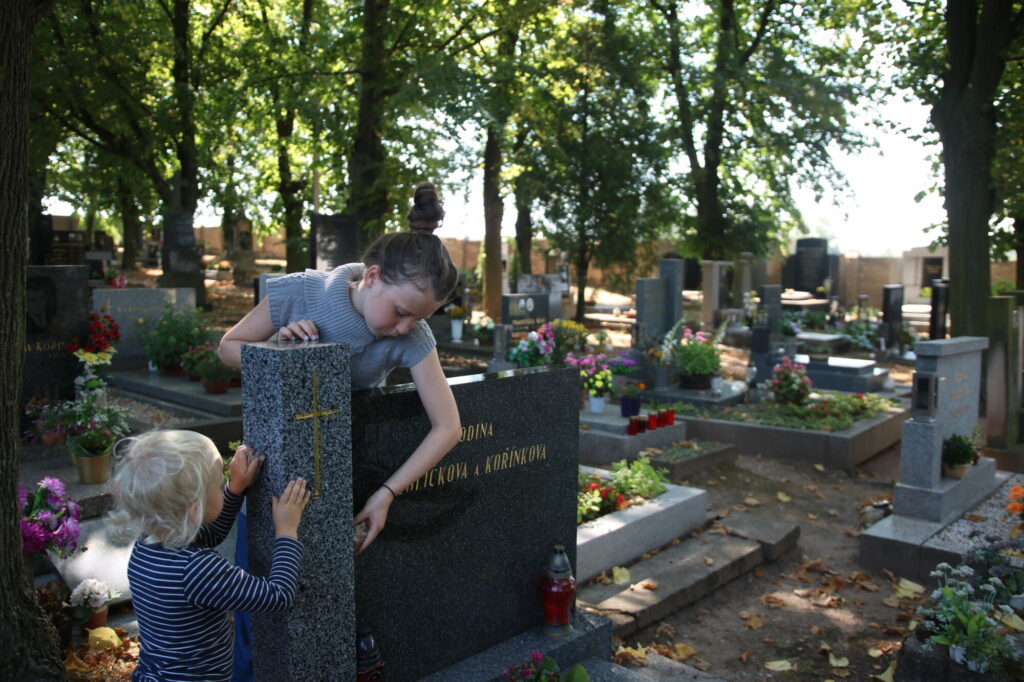
“As nature withdraws into its roots,
we too can turn inward and
find our own quiet strength.”
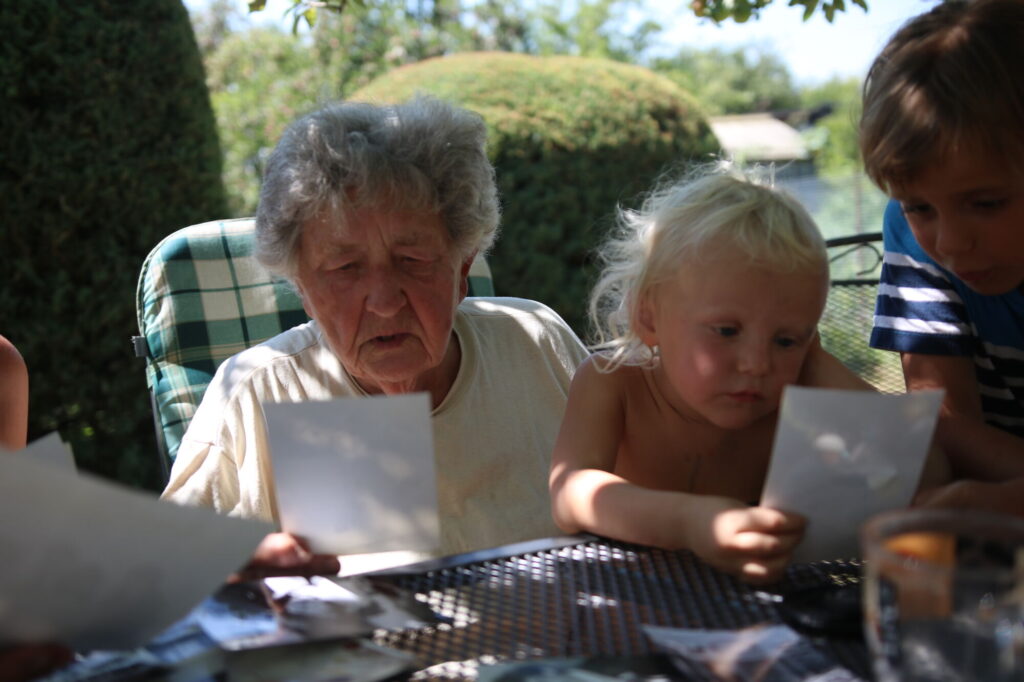
“In the circle of life, we are all connected – like leaves of one tree, falling to nourish the roots and give rise to new leaves in spring.” – Celtic wisdom
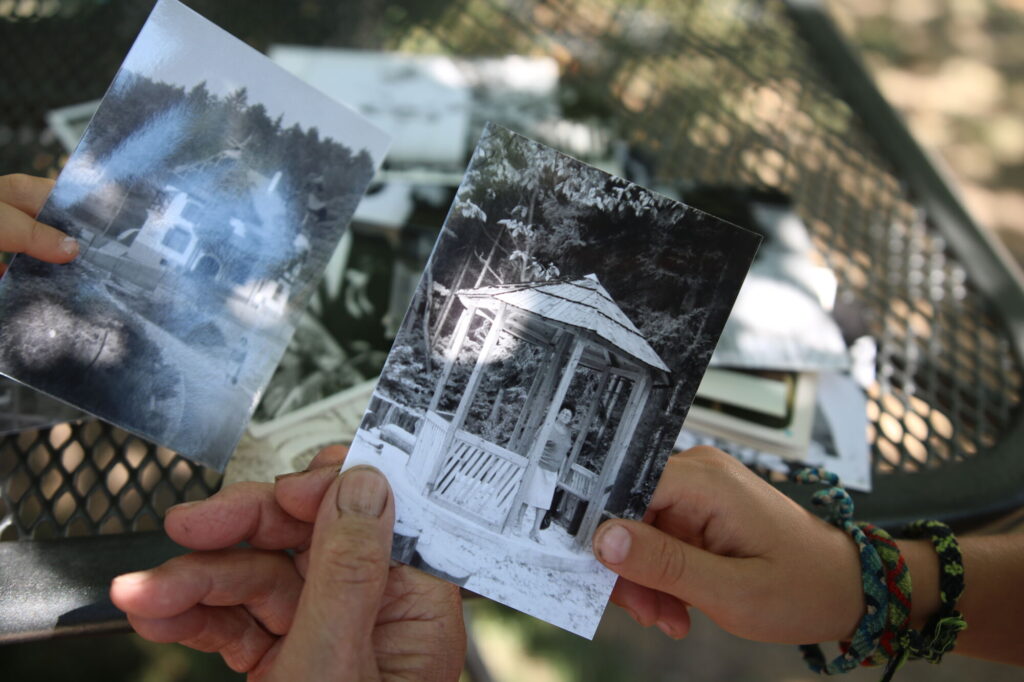
“Nothing is ever lost as long as we remember.”
Pam Brown
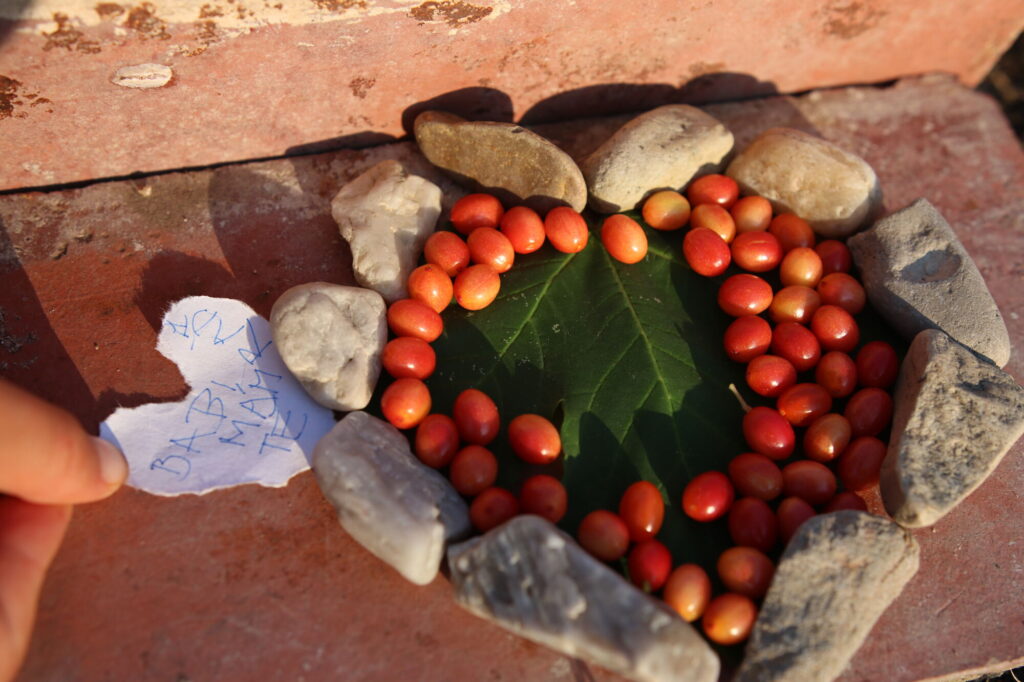
What are your favorite autumn traditions or outdoor activities with children during this season of remembrance?
Share them in the comments or on social media using #Lessonsingrass – inspire and be inspired!
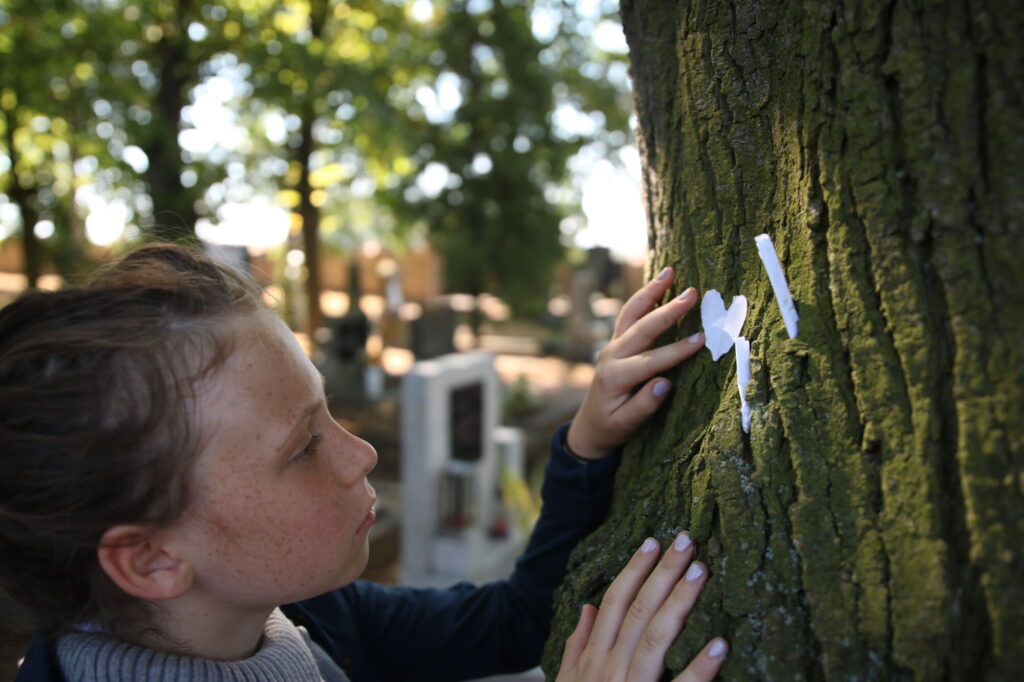
Join the Movement
How do you celebrate this special time of year?
Share your outdoor learning ideas, autumn traditions, or favorite family activities in the comments or tag us on social media with #LearningOutdoors and #LessonsInGrass.
Let’s keep inspiring children – and ourselves – to discover that nature is our greatest classroom, every season of the year. 🌳✨
